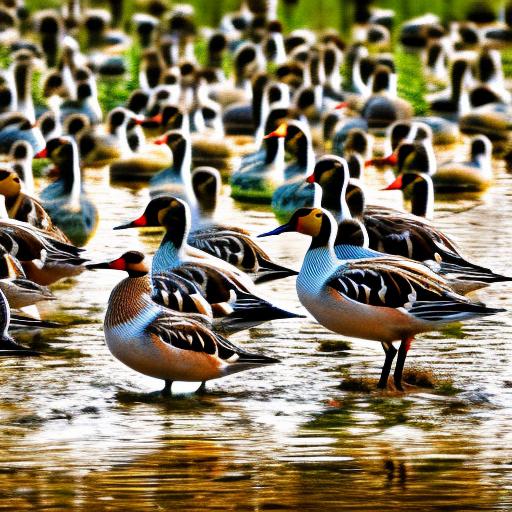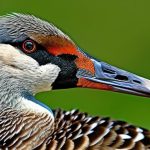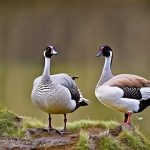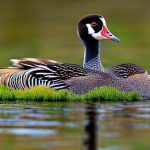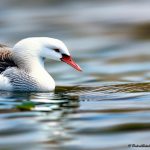Wild geese breeds have a rich history that dates back thousands of years. These majestic birds have played an important role in ecosystems and human culture. They are known for their distinctive physical characteristics, unique behaviors, and impressive migration patterns. In this article, we will explore the various aspects of wild geese breeds, including their physical characteristics, behavioral traits, habitat and distribution, migration patterns, feeding habits, reproduction and life cycle, threats and conservation efforts, domestication, and their role in ecosystems and human culture.
Key Takeaways
- Wild geese breeds have unique physical and behavioral traits that distinguish them from other bird species.
- These birds are found in a variety of habitats across the world, with some species migrating long distances each year.
- Wild geese breeds primarily feed on vegetation, but some species also consume insects and small animals.
- Reproduction and life cycles of wild geese breeds vary depending on the species, with some forming lifelong pair bonds and others raising their young in communal groups.
- Threats to wild geese breeds include habitat loss, hunting, and climate change, but conservation efforts are underway to protect these important birds.
Physical Characteristics of Wild Geese Breeds
Wild geese breeds come in a variety of sizes and weights. The largest species, the Emperor Goose, can weigh up to 10 pounds and have a wingspan of over 5 feet. On the other hand, the smallest species, the Ross’s Goose, weighs only around 3 pounds and has a wingspan of about 3 feet. In terms of feather colors and patterns, wild geese breeds exhibit a wide range. Some species have predominantly white feathers with black or gray markings, while others have more vibrant colors such as brown or gray with patches of white or black.
The beak and leg structures of wild geese breeds also vary depending on the species. Most species have a long, pointed beak that is used for foraging and feeding on vegetation or small aquatic animals. Their legs are typically short and strong, enabling them to walk on land and swim in water with ease. These physical characteristics have evolved over time to suit the specific needs of each species in their respective habitats.
Behavioral Traits of Wild Geese Breeds
Wild geese breeds are highly social birds that exhibit complex communication behaviors. They often form large flocks and communicate with each other through a variety of vocalizations such as honking or hissing sounds. These vocalizations serve as a means of establishing and maintaining social bonds within the flock, as well as warning signals for potential threats.
Mating and nesting habits vary among different species of wild geese breeds. Most species form monogamous pairs that mate for life. They engage in elaborate courtship rituals, which involve displays of affection and synchronized movements. Once a pair has formed, they will build a nest together in a secluded area, usually on the ground or in a tree. The female will lay a clutch of eggs, which both parents will take turns incubating until they hatch.
Wild geese breeds have developed various defense mechanisms to protect themselves and their offspring from predators. When threatened, they may engage in aggressive behaviors such as hissing, flapping their wings, or even charging at the intruder. They also have the ability to fly away quickly if necessary, using their powerful wings to escape danger.
Habitat and Distribution of Wild Geese Breeds
Wild geese breeds can be found in a wide range of natural habitats around the world. They are typically found near bodies of water such as lakes, rivers, or wetlands, where they can find an abundant food supply and suitable nesting sites. Some species prefer coastal areas, while others inhabit inland regions or even high-altitude mountainous areas.
The distribution of wild geese breeds is global, with different species found in various parts of the world. For example, the Canada Goose is native to North America but has also been introduced to other parts of the world such as Europe and Asia. The Bar-headed Goose is found in Central Asia and migrates to India during the winter months. The Pink-footed Goose is native to Greenland and Iceland but migrates to the UK during the winter.
Migration Patterns of Wild Geese Breeds
Migration is a common behavior among many wild geese breeds. They undertake long-distance journeys in search of food and suitable breeding grounds. There are several reasons why wild geese breeds migrate, including the availability of food, changes in weather patterns, and the need to find safe nesting sites.
The routes and timing of migration vary among different species. Some species migrate in large flocks, flying in a V-formation to reduce wind resistance and conserve energy. They often follow specific flyways, which are well-established routes that have been used by generations of geese. These flyways can span thousands of miles and may include stopover sites where the geese rest and refuel before continuing their journey.
Migration poses many challenges for wild geese breeds. They must navigate unfamiliar landscapes, avoid predators, and endure harsh weather conditions. Many geese die during migration due to exhaustion, starvation, or predation. However, those that successfully complete their journey are rewarded with access to abundant food and suitable breeding grounds.
Feeding Habits of Wild Geese Breeds
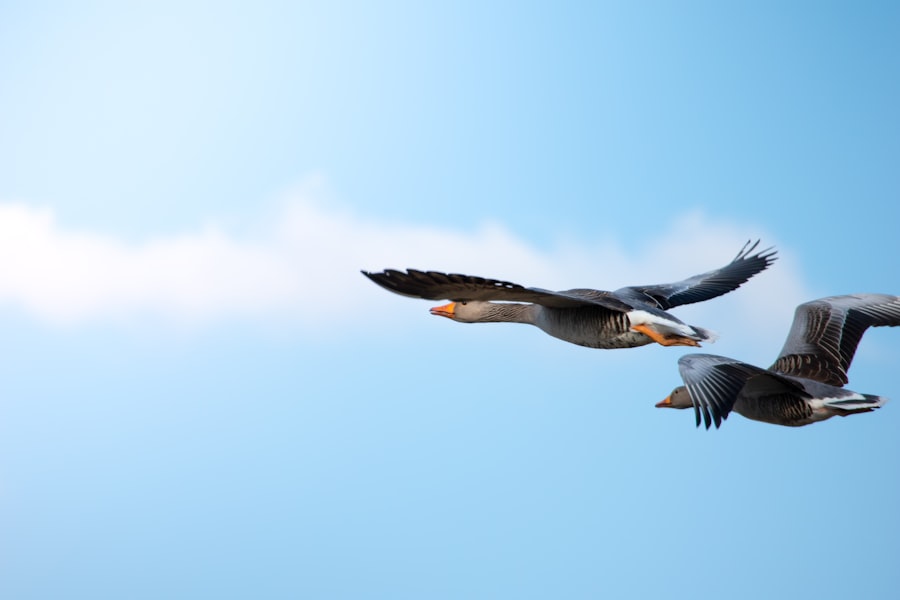
Wild geese breeds have a diverse diet that includes both plant matter and small aquatic animals. They are primarily herbivorous, feeding on grasses, sedges, and other vegetation found in their habitats. Some species also consume seeds, berries, and agricultural crops such as wheat or corn.
Foraging techniques vary among different species of wild geese breeds. Some species feed by grazing on land, while others feed by dabbling in shallow water or diving to reach submerged vegetation. They use their beaks to pluck or tear off pieces of vegetation and then swallow them whole or grind them with their powerful gizzards.
The feeding habits of wild geese breeds have a significant impact on ecosystems. By consuming vegetation, they help control plant growth and prevent overgrowth in certain areas. They also serve as seed dispersers, as seeds pass through their digestive system and are deposited in different locations. This helps promote plant diversity and regeneration in their habitats.
Reproduction and Life Cycle of Wild Geese Breeds
Wild geese breeds have complex mating rituals and behaviors. Once a pair has formed, they engage in courtship displays that involve synchronized movements, vocalizations, and displays of affection. These rituals help strengthen the bond between the pair and ensure successful reproduction.
Nesting and incubation periods vary among different species of wild geese breeds. Most species build their nests on the ground, using materials such as grass, twigs, and feathers. The female will lay a clutch of eggs, usually ranging from 2 to 8 eggs depending on the species. Both parents take turns incubating the eggs for a period of about 25 to 30 days until they hatch.
After hatching, the goslings are precocial, which means they are able to walk and swim shortly after birth. They are cared for by both parents and learn important survival skills such as foraging and flying. The goslings grow rapidly and reach full maturity within a few months, at which point they are ready to breed and continue the life cycle of wild geese breeds.
Threats and Conservation Efforts for Wild Geese Breeds
Wild geese breeds face numerous threats from human activities and environmental changes. Habitat loss due to urbanization, agriculture, and infrastructure development is a major threat to their survival. Pollution of water bodies, hunting, and climate change also pose significant risks to their populations.
To protect wild geese breeds, conservation efforts have been implemented around the world. These efforts include the establishment of protected areas such as national parks or wildlife refuges where geese can find suitable habitats and nesting sites. Conservation organizations also work to raise awareness about the importance of wild geese breeds and advocate for their protection.
Domestication of Wild Geese Breeds
The domestication of wild geese breeds has a long history that dates back thousands of years. Domesticated geese are often bred for their meat, eggs, feathers, or as ornamental birds. They have been selectively bred to exhibit certain traits such as increased size or docile behavior.
There are several popular domesticated breeds of geese, including the Toulouse Goose, Embden Goose, and Chinese Goose. These breeds have been bred for specific purposes and are often kept on farms or in backyard settings. Domesticated geese can provide valuable resources such as meat, eggs, and feathers, and they also serve as companions or decorative additions to gardens or ponds.
Role of Wild Geese Breeds in Ecosystems and Human Culture
Wild geese breeds play a crucial role in ecosystems. They help control plant growth by consuming vegetation and dispersing seeds. They also serve as prey for predators such as foxes, coyotes, or eagles, contributing to the balance of predator-prey relationships in their habitats. Additionally, their migration patterns help transport nutrients and energy across different ecosystems.
In human culture, wild geese breeds have been revered and celebrated for centuries. They have been depicted in art, literature, and folklore in various societies around the world. In some cultures, geese are considered symbols of loyalty, courage, or wisdom. They are also associated with the changing seasons and are often seen as harbingers of spring or autumn.
In conclusion, wild geese breeds are fascinating creatures that have captivated humans for centuries. Their physical characteristics, unique behaviors, and impressive migration patterns make them a subject of study and admiration. However, they face numerous threats from human activities and environmental changes. It is crucial that we take action to protect these magnificent birds and ensure their survival for future generations to appreciate and enjoy.
If you’re interested in learning more about wild geese breeds, you might also find this article on poultrywizard.com fascinating. It discusses the importance of providing a suitable environment for your chickens with a garden chicken coop. Understanding the needs of different bird species, including wild geese, can help ensure their well-being and productivity. Check out the article here: https://poultrywizard.com/keeping-chickens/garden-chicken-coop/.
FAQs
What are wild geese breeds?
Wild geese breeds refer to the different species of geese that are found in the wild. These geese are not domesticated and live in their natural habitats.
How many species of wild geese are there?
There are around 29 species of wild geese that are found across the world. These species vary in size, color, and behavior.
What are some common wild geese breeds?
Some common wild geese breeds include the Canada goose, the snow goose, the greylag goose, the barnacle goose, and the brant goose.
Where do wild geese live?
Wild geese live in a variety of habitats including wetlands, grasslands, tundra, and coastal areas. They are found in different parts of the world including North America, Europe, Asia, and Africa.
What do wild geese eat?
Wild geese are herbivores and primarily feed on grasses, seeds, and aquatic plants. They may also eat insects and small invertebrates.
Do wild geese migrate?
Yes, many species of wild geese are migratory and travel long distances to breed and feed. Some species may travel thousands of miles each year.
Are wild geese protected?
Many species of wild geese are protected under national and international laws. It is illegal to hunt or harm these birds without proper permits and licenses.
Meet Walter, the feathered-friend fanatic of Florida! Nestled in the sunshine state, Walter struts through life with his feathered companions, clucking his way to happiness. With a coop that’s fancier than a five-star hotel, he’s the Don Juan of the chicken world. When he’s not teaching his hens to do the cha-cha, you’ll find him in a heated debate with his prized rooster, Sir Clucks-a-Lot. Walter’s poultry passion is no yolk; he’s the sunny-side-up guy you never knew you needed in your flock of friends!

